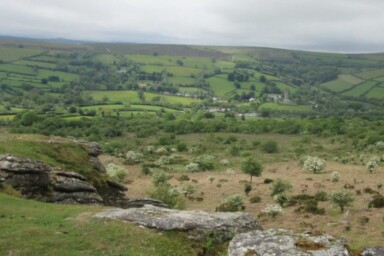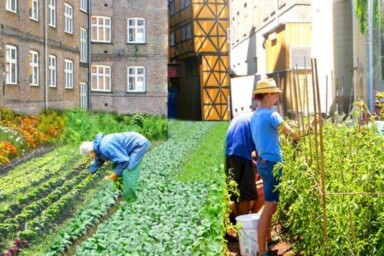When thinking about the health of farmworkers over time, it’s easy to imagine the ordeal of bygone eras: calloused hands, scorched skin and dust-streaked brows may come to mind. And rightly so – since the invasion of William the Conqueror in 1066, the feudal system has left a long-lasting legacy of subjugation and enslavement in agriculture. In these systems, with exceptions, the health and safety of workers is largely considered a means to an end, a way to ensure that production can continue unencumbered by the death or serious injury of workers. What this means in reality is a life of bare subsistence and exploitation, where productivity is favoured over sustainability, and labour is exchanged for just enough money, food and rest to survive.
It’s tempting to say that these horrors have been consigned to the past. Sat behind a desk in urban England, it’s easy to see the hallmarks of a more caring sector – human rights are now relatively well established, unions promise to protect workers and the slave trade has, on the face of it, been abolished. But, of course, this is not always the case.
The structures that permeated the feudal system continue to enable and perpetuate inequalities today, leading some to label agriculture as the accelerator of many modern ills, including patriarchy, war and famine. And it’s not surprising that it’s been linked to slavery: agriculture is classified as a ‘high-risk’ industry for exploitation, abuse, poor pay and working conditions. It’s also associated with the displacement of communities in the Global South due to climate change and loss of indigenous land rights, factors which significantly increase vulnerabilities to human trafficking and exploitation. As a result, 10 centuries later, agricultural labourers are among the 16 million workers in the private sector still living as modern slaves.
And the situation only seems to be worsening. In the UK, the regulators of modern slavery – The Gangmasters and Labour Abuse Authority (GLAA) – received the same amount of referrals relating to exploitation in the first half of 2020 as the total amount for 2017. Between 2016 and 2017, there had already been a 35% increase in referrals. With the impacts of COVID-19 and Brexit only just beginning to show, experts have warned that the pressure on employers to pay low wages, provide indecent housing and demand long-working hours are only going to grow.
It’s a similar story elsewhere. The Global Slavery Index estimates that 400,000 people in America are living in modern slavery, noting that demand for imported, inexpensive food can exacerbate the problem worldwide. Indeed, ‘cheap’ food, is never cheap. Low-priced food often hides the true cost of production, the systems of which rely on human and environmental exploitation. As such, consumers end up paying for the costs in hidden ways, such as ecological damage, taxation, poor health and migration, to name but a few. It follows that places with a high number of ‘cheap’ food exports, such as countries in Asia, South America and the Pacific, are particularly vulnerable to worker exploitation. However, with global food trade becoming more and more interconnected, the ability to identify and untangle ethical production systems from those reliant on exploitation becomes increasingly challenging for suppliers and consumers alike.
Further, identifying such systems can become even more challenging when invisible inequities are considered. All around the world, the experience of working on farms, as well as access to land, education, and resources, is determined by race and gender, as well as physical and cognitive ability. Indeed, women account for nearly 71% of all victims of modern slavery. Migrant workers and BIPOC communities are also disproportionately affected by exploitation in the food and farming industry, as well as those with lower cognitive ability. Although the prevalence of this is well documented, structural inequalities manifest in more insidious ways than their historical – and in some ways more obvious – counterparts, making it harder to monitor and protect workers.
Perhaps less obviously, these inequities also affect the sustainability of food and farming systems. On a basic level, the health, skills and number of workers affect the efficiency and functioning of the farm – a strong, healthy and skilled workforce is more likely to be resilient to the day-to-day challenges of farm life and especially new ones arising with climate change. A supportive working environment that nurtures physical and emotional wellbeing has also been linked to a healthy and sustainable environment which is key for food system security, as well as the health of people and the planet. Protecting the health and safety of workers on farm is then critical not only for social justice, but planetary wellbeing.
So where do we go from here? Terrific leaps forward have been made by organisations, such as Fairtrade and Tony’s Chocolate, who work to provide a fairer deal for farm workers and improve working conditions in the Global South. One of the ways Fairtrade do this, is to certify organisations and set standards using metrics that measure the conditions and equity of trade deals for farm workers. However, the scope of these organisations is relatively small and labour issues are either absent or periphery in most major certification schemes, limiting their ability to capture more than just environmental sustainability.
While addressing these inequities is by no means a simple task, the Sustainable Food Trust (SFT) believes a global and harmonised measure of the health and safety of farm workers (what we call ‘human capital’) could help towards unlocking this vital barrier to change. By beginning to observe, monitor and record the key indicators of worker health in a meaningful way, stakeholders in the food and farming system across the globe can begin to have transparent conversations about their sustainability using a common language.
The SFT have been working towards this in a number of ways. In collaboration with Women Forward International and a group of Cornell University researchers, we’ve been investigating how farms can account for the true costs of racial and gender inequity within the farm gate which, currently, no tool has attempted to measure. Once completed, this project will be used to inform the measure of human capital in the Global Farm Metric. Hear more about this project from our Deputy CEO, Adele Jones, and researcher Louise Erskine at Women Forward International’s event, The Vanguard [skip to 2:04:00].
Our Global Farm Metric coalition has also been working towards consensus with major global stakeholders in the food and farming system to create a harmonised set of indicators for human capital. These indicators will work to measure the health and safety of workers on farm, allowing farmers to monitor the impact of working conditions.
Although there are still significant structural changes to be made in order to address modern slavery and exploitation on farms, we believe that measuring and making explicit the link between worker welfare and sustainability is critical if we are to help promote ethical food production, reveal the hidden cost of food and tackle climate change in an increasingly global and pressurised world.
This article explores some of the drivers and impacts of forced farm labour. However, this only scratches the surface – the issues discussed are far more complex, widespread and devastating. For more information on the matters discussed, you can visit the GLAA and FarmWell website (UK). If you are affected by any of these issues, you can call the Modern Slavery Helpline on 0800 0121 700 for advice.







